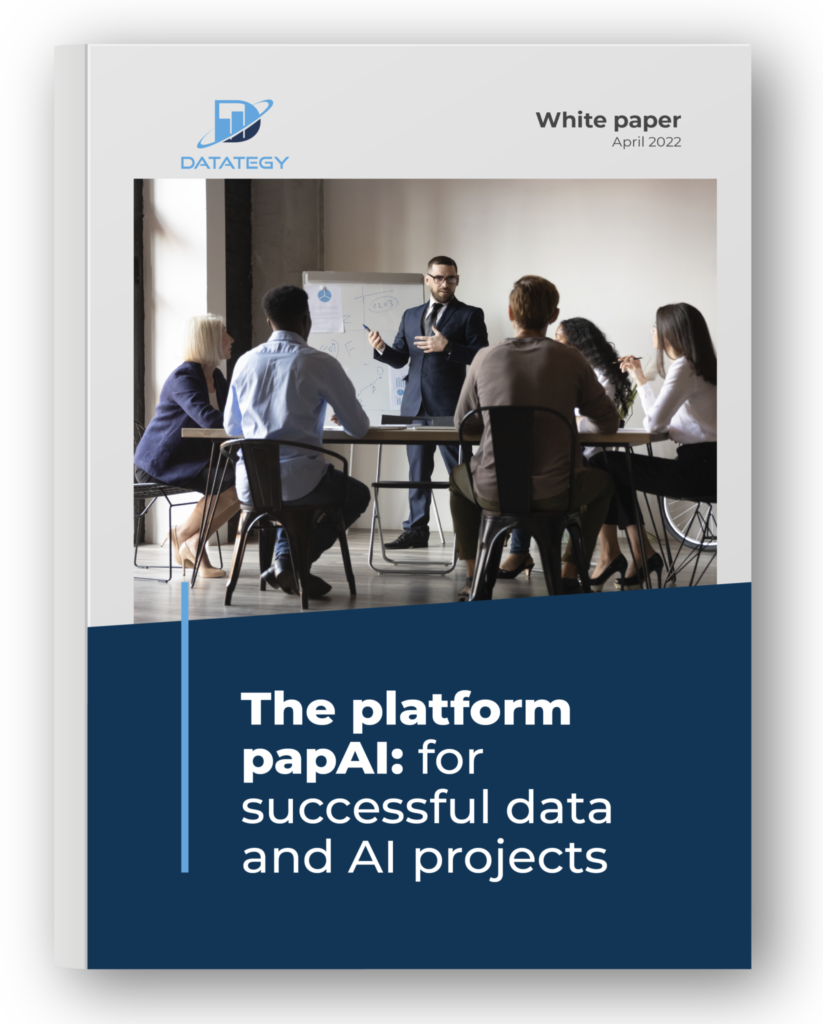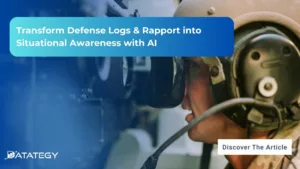Transform Defense Logs & Rapport into Situational Awareness with AI...
Read MoreArtificial intelligence (AI) is making an impact in practically every business in today’s quickly developing digital world, and the insurance industry is no different. Thanks to AI’s disruptive potential, the traditional insurance sector is experiencing huge upheaval. By 2023, AI has the potential to save the insurance sector $217 billion annually, according to a report by Accenture.
Find out how papAI can improve the deployment of AI projects in the Insurance Sector here.

The article examines how artificial intelligence is transforming the insurance industry and laying the groundwork for AI-powered insurance solutions. AI is changing how insurance businesses work in a variety of ways, including automated underwriting, claims processing, personalized risk assessment, and customer experience. Insurance companies may improve productivity, accuracy, and overall performance while offering clients specialized goods and services by utilizing AI to its fullest potential.
1- Automated Underwriting
Underwriting, which entails analyzing insurance applications and determining related risks, is one sector where AI is having a substantial influence. Insurance companies can speed up the review process, reduce human error, and provide more accurate risk assessments using AI-powered automated underwriting. AI algorithms offer useful insights that help insurers make wise decisions more quickly and effectively through the examination of enormous volumes of data, including past claims, medical records, and financial information.A study by Deloitte estimates that AI-driven underwriting can lead to cost savings of 30-40% in underwriting operations.
Automated underwriting improves the speed and accuracy of risk assessment while also enabling insurers to provide policyholders with more affordable rates. AI algorithms can distinguish between high-risk and low-risk applicants by seeing patterns and trends in the data, allowing insurers to customise pricing and coverage appropriately. This encourages more equitable pricing and lowers the risk of fraudulent operations, which benefits insurance firms as well as policyholders.
2- Fraud Detection
Another area in which AI solutions are commonly applied in the insurance sector is fraud detection and prevention. AI-driven fraud detection solutions can be used to analyze massive amounts of data from multiple sources, enabling insurers to spot and flag unusual patterns that a human might miss, thereby detecting possibly fraudulent claims. According to a study by McKinsey, insurers leveraging AI for fraud detection reported a significant increase in detection accuracy, with some achieving detection rates as high as 90%.
For example, AI can be used to analyze documents and images related to a claim to find potential indications of fraud. Pattern recognition on vehicle damage data can be used to detect cases of fraud that would not be recognizable under previous systems. AI software can also detect manipulated images or other factors that might raise suspicion. This could include images from the internet indicating that the customer has sold the items prior to making a claim or data indicating that the photos provided for documentation were taken after the filing of the claim.
3- Personalized Risk Assessment
AI gives insurers the ability to migrate away from a one-size-fits-all approach to risk assessment and gives them the chance to provide policyholders with more individualised solutions. AI algorithms can discover unique risk profiles and tailor insurance plans by analysing large datasets, including demographics, lifestyle choices, and internet behaviour.
Telematics devices, for example, can gather information on driving habits such as speed, acceleration, and braking patterns for use in vehicle insurance. Based on this information, AI systems can evaluate each driver’s probability of collision properly. With usage-based insurance plans, insurers may encourage safer driving behaviours and more equitable pricing by basing premiums on actual driving behaviours.
The same is true for health insurance, where AI algorithms can evaluate a person’s health risks properly by reviewing their genetic information, medical history, and lifestyle choices. This makes it possible for insurers to offer individualised coverage and wellness initiatives that are tailored to individual patients’ requirements and encourage positive lifestyle choices.
4- Processing claims for compensation
Claims processing is another area where AI is revolutionising the insurance sector. Claims processing has often been a labour- and time-intensive operation. However, by using AI, insurers may automate a number of claims processing procedures, leading to quicker and more effective claim settlements.
AI-powered systems can examine claim paperwork, verify insurance information, and precisely calculate losses. AI systems can extract pertinent information from unstructured data, such as pictures, bills, and medical reports, by utilising image recognition and natural language processing skills. This simplified method minimises the possibility of mistakes, shortens the overall settlement time, and requires less user involvement.
How to choose the best AI solution for your data project?
In this white paper, we provide an overview of AI solutions on the market. We give you concrete guidelines to choose the solution that reinforces the collaboration between your teams.

5- Customer Churn Prediction
Customer churn can be caused by a number of things, including unhappiness with goods or services, rivalry in the market, changes in personal circumstances, or a lack of participation. Businesses must be able to spot the early indicators of churn and foresee it before it occurs. AI is useful in this situation. A survey conducted by the Digital Insurance Agenda (DIA) found that 52% of insurance companies identified customer retention as a key area where AI and data analytics could have a significant impact.
Predicting the loss of clients is an essential component of corporate strategy, and AI has played a critical role in overcoming this difficulty. AI is able to identify which consumers are most likely to leave by examining enormous volumes of customer data and using machine learning algorithms. This enables companies to manage resources wisely, personalize client experiences, and proactively execute retention measures. Businesses may identify at-risk clients and take the necessary steps to keep them by using AI’s capacity to gather and integrate data, create significant characteristics, train predictive models, and constantly improve them. Businesses may improve customer happiness, realize cost savings, and gain a competitive edge in the market by lowering customer attrition. Businesses aiming to maximize client retention efforts and maximize revenue now need to use AI-powered customer churn prediction.
Numerous client data points, such as purchase history, browsing patterns, demographic data, and customer interactions, may be analyzed by AI algorithms. Artificial intelligence (AI) models may find patterns, correlations, and churn predictions by utilizing machine learning approaches.
6- Improving customer service
AI is revolutionizing how insurance businesses communicate with their clients, leading to better customer satisfaction scores and improved consumer experiences. Virtual assistants and chatbots powered by AI are used to answer consumer questions, offer real-time assistance, and direct clients through the insurance purchasing process.
This artificial intelligence (AI)-powered customer support system can comprehend natural language and offer individualized replies, improving interactions. Chatbots allow customers to ask inquiries, get quotations, and even start claims right away without having to wait for a human to respond.
In order to personalize the insurance experience, AI algorithms may also examine client information such as prior encounters, preferences, and comments. Insurance companies may provide pertinent advice, discounts, and specialized coverage alternatives by comprehending their clients’ needs and preferences. Increased customer satisfaction, higher retention rates, and a stronger overall relationship between insurers and policyholders are all benefits of this degree of personalization.
7- Enhanced Efficiency and Accuracy
Insurance businesses may greatly improve their efficiency and accuracy in a variety of operational areas by utilizing AI. Data input, document processing, and administrative chores are examples of repetitive, time-consuming operations that AI algorithms may automate. As a result, human resources may concentrate on tasks that are trickier and more valuable.
Using massive quantities of policy papers as an example, AI-powered systems may extract the necessary information and fill in the appropriate areas. This not only saves time but also lessens the chance of mistakes and omissions when entering data manually.
Create your own AI-based tool with papAI solution to meet your specific needs
In conclusion, organizations of all sizes are finding that there is an increasing need to use AI-based technologies and insurance is one of them. Companies can create their own AI-based tools that are tailored to their needs using the papAI solution. This could lead to improved decision-making by business teams and increased profitability.
papAI solution enables results to be explained and made transparent through a data exploration, cleansing, and visualization process that can accelerate the deployment of AI projects.
Book your demo now. Our team of experts can help you create a custom AI-based tool that meets the unique needs of your organization.
Interested in discovering papAI?
Our commercial team is at your disposal for any questions
Why AIOps Is Key to Cyber Threat Detection in Defense?
Why AIOps Is Key to Cyber Threat Detection in Defense?...
Read MoreHow AI Transforms Predictive Maintenance in Defense Equipment
How AI Transforms Predictive Maintenance in Defense Equipment In a...
Read MoreHow to Scale AI Without Breaking Your Infrastructure in 2025
How to Scale AI Without Breaking Your Infrastructure in 2025...
Read More


